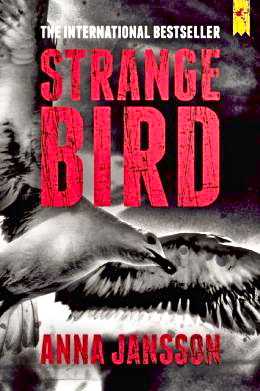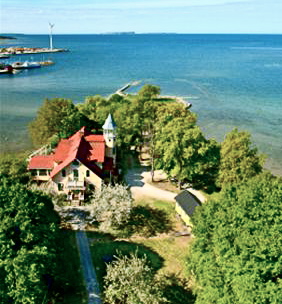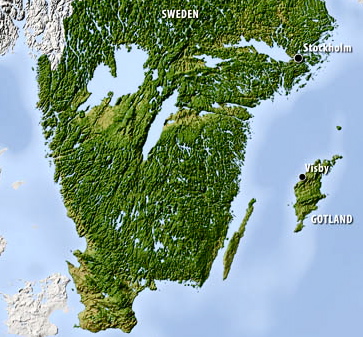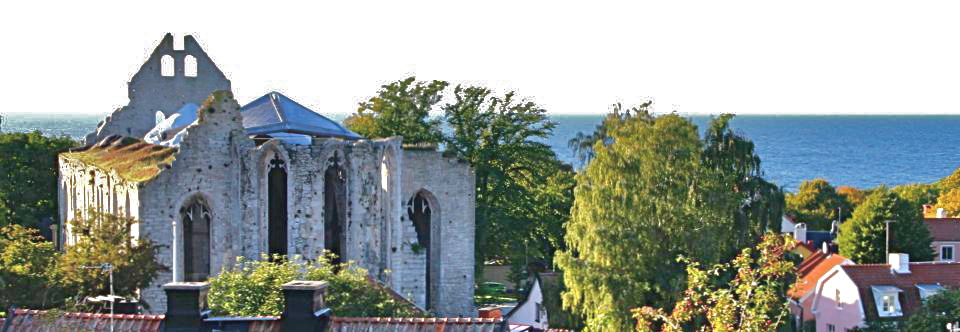“Everything is falling apart…The parents are demanding to pick up their children. The barricade is crowded with people who intend to help them free the children…It feels like they might start throwing rocks or let the dogs loose on the police…They don’t understand what they are risking if the infection gets out and there isn’t any medicine.”
 This dramatic quotation instantly establishes the intensity of this new novel from Sweden by Anna Jansson, candidate for the Glass Key Award for Best Scandinavian Novel in 2012 for its story involving a pandemic of bird flu on an island off the Swedish coast. A new name to American readers, Anna Jansson has had a dual career as both a nurse and a writer, and has already sold over two million copies of her Nordic crime novels throughout ten countries in Europe. This novel, the first in the Maria Wern series to be translated into English, is also the inaugural hard-copy novel by her publisher, Stockholm Text, which for the past two years has published only e-books, releasing seventeen of them in that short time and dramatically increasing the name recognition of Anna Jansson and the publisher’s other Nordic crime authors. Now available to an English-speaking audience, Strange Bird will undoubtedly captivate new readers, sweeping them up with the provocative opening chapters, as the action begins on Gotland, a sparsely inhabited island in the Baltic, sixty miles off the coast of Sweden. Unlike most noir novels, this novel involves characters one comes to appreciate for their simple honesty and the genuine feelings they convey for each other.
This dramatic quotation instantly establishes the intensity of this new novel from Sweden by Anna Jansson, candidate for the Glass Key Award for Best Scandinavian Novel in 2012 for its story involving a pandemic of bird flu on an island off the Swedish coast. A new name to American readers, Anna Jansson has had a dual career as both a nurse and a writer, and has already sold over two million copies of her Nordic crime novels throughout ten countries in Europe. This novel, the first in the Maria Wern series to be translated into English, is also the inaugural hard-copy novel by her publisher, Stockholm Text, which for the past two years has published only e-books, releasing seventeen of them in that short time and dramatically increasing the name recognition of Anna Jansson and the publisher’s other Nordic crime authors. Now available to an English-speaking audience, Strange Bird will undoubtedly captivate new readers, sweeping them up with the provocative opening chapters, as the action begins on Gotland, a sparsely inhabited island in the Baltic, sixty miles off the coast of Sweden. Unlike most noir novels, this novel involves characters one comes to appreciate for their simple honesty and the genuine feelings they convey for each other.
As Strange Bird opens, Ruben Nilsson, a man in his seventies, is reminiscing about Angela Stern, the love of his life, though fifty years have passed since he missed his chance to tell her how much he loved her. At the critical time, when he might have declared his love, “all he could think of to say was that the price of wool didn’t look too good but that potatoes were doing fine.” Even now, he wishes he could have changed that outcome. Ruben’s only family now is the pigeons he raises and races. When the novel opens, a new pigeon has arrived and settled on Ruben’s roof – a foreign bird with an identifying ring around his leg, different from those of Swedish birds. Excited by this change in his normal routine, Ruben quickly looks up the identification and is surprised to discover that the bird has arrived from Belarus. The next day the bird is dead.
Alternating memories from the past with circumstances in the present, Jansson creates initial scenes in which Ruben Nilsson becomes a kind of everyman, a carpenter with some skills as a mason but little education, less ability to understand how others think and feel, and no ability to understand himself. “His language was in his hands,” a conclusion he accepts. His neighbor, Berit Hoas, helps him out the next day when he feels ill, feeding his pigeons and providing him with some morels for his supper. She then goes off to work in the lunchroom at a soccer camp for children. Soon she, too, is seriously ill. Convinced that she and Ruben might both have become ill from the mushrooms she fixed for supper, she goes to the emergency room of the hospital where she has to wait. In the meantime, a jogger discovers the body of a man, his throat slit, in a small pup tent at an abandoned farm.

Photo by RATAEDL
The novel immediately intrigues the reader for its dramatic events, which the author allows the reader to interpret on his/her own, and for its unusually vivid characters, however “ordinary” they may seem. It is not until this point, fifty pages into the novel, that Anna Jansson finally introduces main character Maria Wern, a Detective Inspector with the Gotland police, who interviews the jogger who discovered the murdered man’s body. Maria becomes a fully developed and sympathetic character, far different from the usual alcoholic loner so common to Nordic noir. Her life, presented so naturally that she feels “familiar” to the reader from the outset, makes the challenges she faces with this case even more intense and personal than one would expect. Living only a few hundred yards from the scene of the murder, the newly-divorced Maria is still learning to handle the communication difficulties with her ex-husband regarding their two children, while working full-time. Dropping off a flashlight to her son at the soccer camp, she discovers that Berit Hoas, the cook, has not arrived at work in the lunchroom that day, and when she stops at Berit’s house later, she sees a police car at the house next door, that of Ruben Nilsson.

The yellow Warfsholm Guest House, with its turret and white porch, where Maria and the disease specialists have a community meeting.
From this point on, the action keeps going and going and going, with one surprise after another as many more characters and plot complexities involve the reader. The problems with a developing pandemic of bird flu become far more critical than finding the murderer of the man in the pup tent. The hospital has set up an observation ward and keeps sick people isolated. The children at soccer camp are quarantined to protect as many as possible, and those who develop flu are transported elsewhere. The shortage of Tamiflu, is kept a secret from the population, and the availability of some medications on the internet – for a large fee – highlights “entrepreneurs” who are willing to exploit life-or-death emergencies for profit. A growing list of deaths, threats made to medical and police personnel, and the fear that the epidemic will spread beyond the island add to the drama. The medieval history of the island contributes to the morbid atmosphere with tales of the Black Death which occurred there. Eventually, a physician begins to consider the almost impossible idea that the pandemic may be deliberate.
Although the novel has, perhaps, a few too many complications within a story that is already inherently terrifying, the author does keep the interest high and the tempo of the novel moving quickly. Her unusually good characterizations of people who are unpretentious and fairly “typical,” rather than unique in oddball ways, makes them memorable – people the reader feels s/he can “know.” The concluding pages contain shocking twists. With this strong start in the Maria Wern series, it is easy to imagine a long series of successful new Scandinavian crime novels from this intriguing author and unusual publisher.
Photos, in order: The author’s photo by Leif Jansson/Scanpix may be found here: http://www.dn.se/
The map of Gotland and its relation to Sweden and other countries is from http://www.geoexpro.com This site also has some other outstanding photos of Gotland.
The racing pigeon, photo by RATAEDL may be found on http://en.wikipedia.org
The Warfsholm Guest House, where Maria has a meeting with the community, is a real place, described as a “yellow building with its charming tower and big white porch, bathed in warm evening sun, as if no evil existed.” Other photos here. http://www2.destinationgotland.se/
The photo of St. Nikolai Cathedral is from http://www.kultudralen.se/
ARC: M. Zegarek for Stockholm Text



